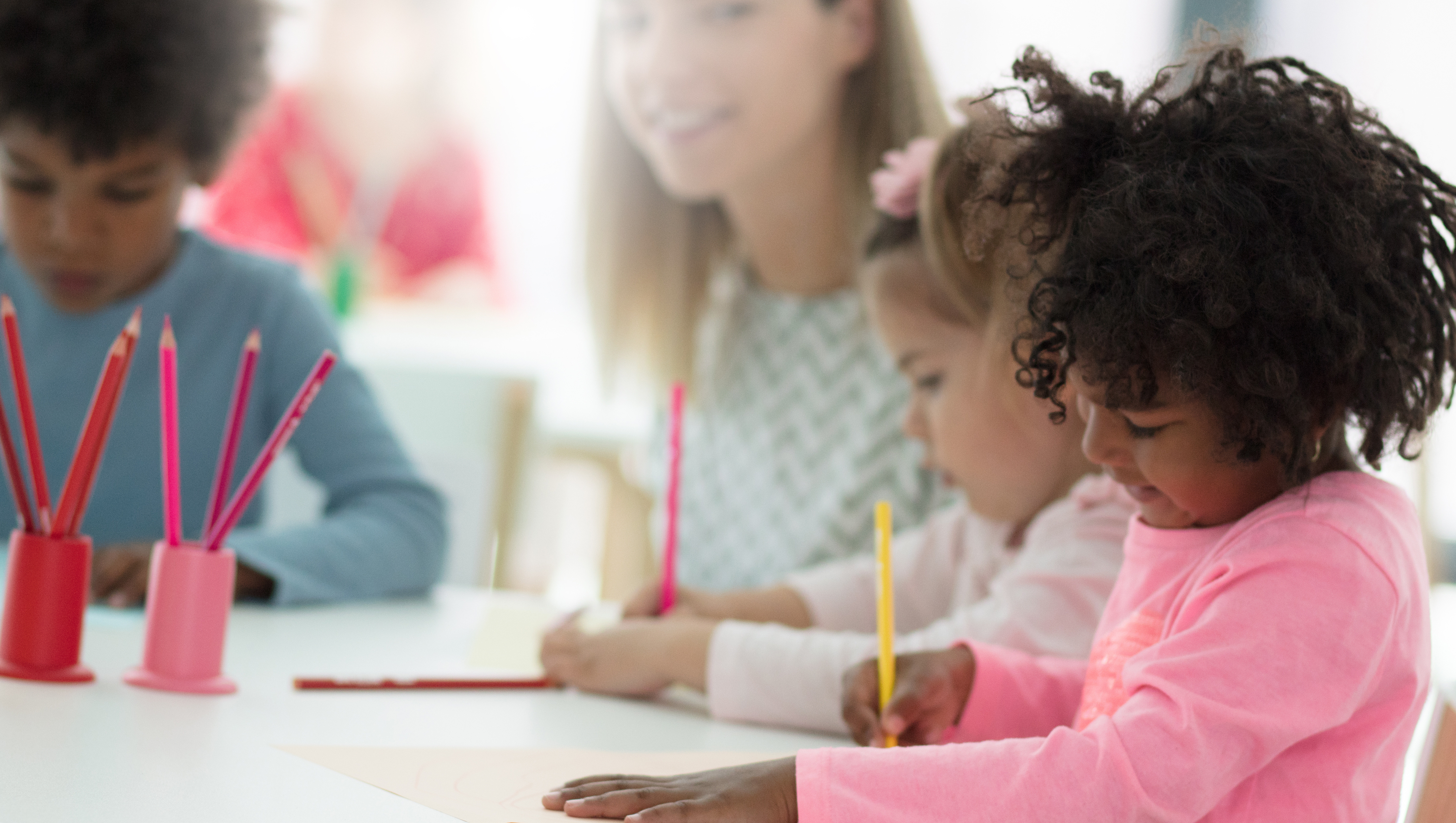
Challenging behavior is one of the greatest struggles in early childhood education that teachers face in the classroom. While it’s natural for children to become frustrated or agitated as they learn to express emotions, challenging behavior can often disrupt classroom activities. Instead of reacting after issues arise, proactive strategies help prevent disruptions before they start by addressing the underlying cause of behavior and adapting to a supportive environment that can help children develop the skills they need to manage their emotions and actions.
However, no single approach is foolproof. While proactive methods reduce the likelihood of disruptions, pairing them with well-planned responses ensures that when behavior challenges occur, they are handled in a way that supports both the child and the learning environment.

The Root of Behavior Challenges
Young children are still developing self-regulation skills, and their behaviors often stem from unmet needs, family circumstances, lack of structure, or difficulty expressing emotions. Instead of viewing challenges as simple misbehavior, it’s important to recognize them as a form of communication.
When teachers proactively create a structured and supportive environment, they can reduce many behavior issues before they arise. Responding appropriately to behavioral challenges helps children learn better ways to manage their emotions and actions when they occur. Every child learns differently, so it’s important to identify their needs and behaviors.
Proactive and Reactive Approaches Can Work Together
While proactive methods lay the groundwork for positive behavior, challenges will still arise. This is where a well-planned reactive approach becomes important. Reactive strategies are opportunities to reinforce expectations and guide children toward better choices.
When a behavior issue occurs, responding consistently and calmly ensures that the child learns from the situation. Reactive strategies should include:
- Redirection: Gently guiding a child’s attention toward a more appropriate activity.
- Calm, Firm Responses: Addressing the behavior without escalating the situation.
- Logical Consequences: Teaching accountability in a way that directly connects to the behavior.
When we combine proactive classroom management with thoughtful responses to challenges, teachers create an environment where children feel supported in their successes and struggles. This balanced approach not only prevents behavior issues but also ensures that when they do occur, they are handled in a way that promotes long-term growth and self-regulation.
Proactive Strategies to Prevent Behavior Challenges
Help Children Transition Between Activities
Transitions between activities are common times when behavior challenges arise. Sudden changes can be difficult for young children, especially those who struggle with flexibility. Preparing children for transitions can significantly improve the smooth and structured classroom environment.
Giving verbal warnings before a transition helps children mentally prepare for the change. Visual cues, such as a timer or picture schedule, allow them to anticipate what’s next. Keeping transitions consistent, whether using a cleanup song or a countdown, helps reinforce expectations and makes transitions feel predictable rather than abrupt.
Offer Choices to Reduce Power Struggles
Young children often act out when they feel they have no control over their environment. Providing structured choices helps them feel empowered while still following expectations. Instead of issuing commands, offering two acceptable options allows the child to decide within set boundaries.
For example, a teacher might say, “Would you like to sit on the carpet or at a table for storytime?” or “Do you want to use markers or crayons for your drawing?” Giving choices helps reduce resistance, prevents power struggles, and encourages children to take ownership of their actions.
Assess How the Environment Affects Behavior
Classroom environments play a significant role in behavior management. Factors such as noise levels, classroom layout, and seating arrangements can impact a child’s ability to focus and regulate emotions.
If a child consistently displays challenging behaviors, it may be helpful to evaluate external influences. Are there too many distractions in the learning space? Is the seating arrangement contributing to social conflicts? Does the classroom balance varying sensory needs access to quiet spaces when they need a break and time and space to use big body movements to do heavy work?
Making small environmental adjustments, such as incorporating movement breaks or creating designated calm-down areas, can prevent many behavior issues before they occur.
Observe and Track Behavior Patterns
When a child repeatedly exhibits challenging behavior, it’s important to look beyond the surface and identify patterns. Observing and documenting behavior can help teachers pinpoint triggers and develop effective intervention strategies. Keeping a simple record of when and where behaviors occur, what happens before the behavior, and how the child responds to redirection provides valuable insights.
For instance, if a child frequently becomes upset during group activities, it may indicate social discomfort or sensory overload. If they act out before lunch, they may be hungry or struggling with transitions. Teachers can make informed decisions on how to adjust classroom practices and better support the child by tracking behaviors and identifying trends.
Creating a Positive Learning Environment
Addressing behavior challenges effectively requires a mix of prevention and intervention. At the same time, having a plan for responding to behavior challenges ensures that when difficulties arise, they are met with strategies that support both the child and the overall learning environment.
At FirstDay Learning, we’re committed to meeting early childhood educators where they are and equipping them with tools that make a real impact from day one. Whether it’s integrating social-emotional learning or strategies for managing challenging behavior, our professional development programs are designed to empower teachers and improve classroom outcomes. Contact us through our online form or call 434-989-2434 to learn how we can support your classroom.



